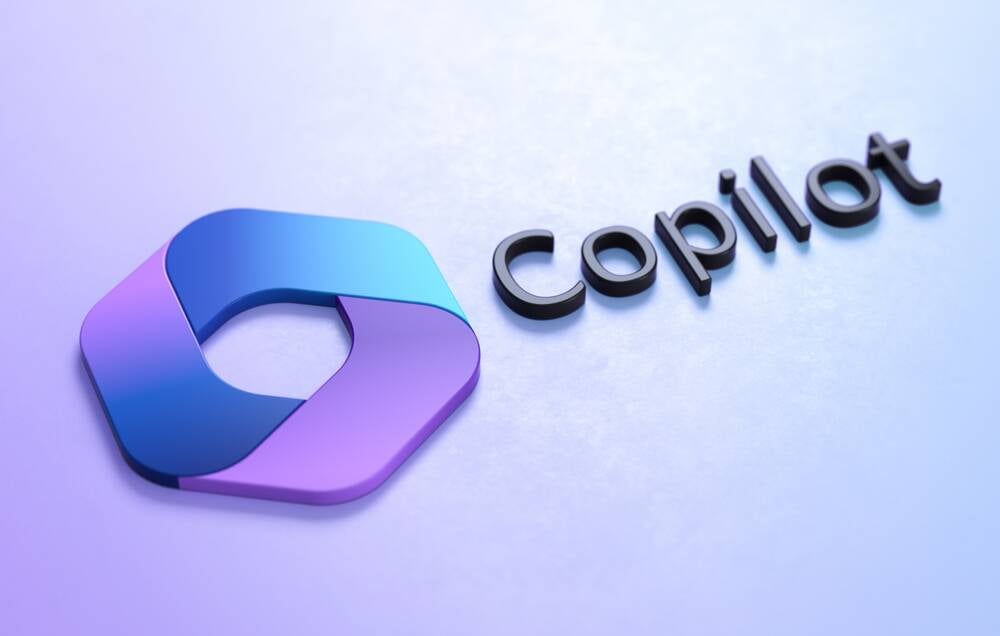
Build At Microsoft, “it’s Copilots all the way down for us.”
So said Frank Shaw, chief communication officer at Microsoft, in a pre-recorded interview with Mustafa Suleyman, EVP & CEO of Microsoft AI, newly wooed from Google’s DeepMind.
It was not an adversarial exchange with challenging questions, but rather a cordial conversation between colleagues about AI and the Microsoft Build conference, meant for the consumption of the press.
Suleyman said there are now about 135 live Copilot surfaces across the Microsoft portfolio in the space of nine months, which tells you something about Redmond’s enthusiasm for AI.
Microsoft uses the term Copilot to refer to generative AI, or machine learning models that accept some form of input – text, audio, or video – and provide output in one or more of those forms.
“This is going to be something that lives with you, that is in the background, aiding you and supporting you throughout your entire life,” explained Suleyman. “And that’s a very bold statement in itself, right? I mean, this isn’t just a new technology platform shift. This is gonna be a profound shift in what it means to be human and how we interact with our tools.”
“Commerce is our goal here at Tyrell,” as Dr Eldon Tyrell put it in the film Blade Runner. “‘More human than human’ is our motto.”
Microsoft’s aspirations for Copilot don’t yet extend to humanoid automation. But the business that brought us Clippy, Tay, and Cortana, believes everyone can benefit from its infatuation with assistive software.
“Copilot is now becoming a phrase that people use to refer to AI assistance, to personal AIs, to productivity AIs, to work AIs,” explained Suleyman, noting that other companies are adopting the term too.
Microsoft likes the brand because it suggests the customer is in control. But “copilot” isn’t entirely brand-safe. Recall Andreas Lubitz, the copilot on Germanwings Flight 9525, who on March 24, 2015 locked the flight’s captain out of the cockpit and proceeded to fly the plane into the side of a mountain.
Keep that in mind as you mull Team Copilot, an expansion of Copilot for Microsoft 365, that’s coming later this year. As described by Shaw, “Team Copilot will serve as a meeting facilitator in Teams meetings, managing the agenda, tracking time, and taking notes. It will act as a group moderator in Teams chats by summarizing important information and responding to questions from the group. It will act as a project manager to ensure every project runs smoothly in Planner and notify the team for input and collaboration using Loop.”
That brings us to extensibility – giving AI access to other resources. Microsoft is taking various connective concepts for Copilot – the way in which AI models can be linked to software and services – and calling them Copilot extensions. So long “plugin.” Later, “adapter.”
What’s expected
Redmond envisions developers building Copilot extensions using Microsoft Copilot Studio or Microsoft Teams Toolkit for Visual Studio Code. It foresees Copilot for Microsoft 365 being connected to other software with Copilot extensions for apps like Jira, Priority Matrix, and Mural.
Toward that end, Microsoft is adding new agent capabilities to Copilot Studio, for those participating in the IT giant’s early access program. A public preview is planned later this year.
“With Copilot Studio, copilots are going from reactive to proactive,” said Charles Lamanna, corporate VP of business applications and platforms, in an announcement provided earlier to The Register.
“Developers provide their copilot with a defined task, equip it with the necessary knowledge, and actions and then Copilot Studio orchestrates dynamic workflows and acts behind the scenes to seamlessly integrate them to automate the task.”
The idea here is that businesses can take repetitive, predictable processes and automate them. It’s macros, but with AI instead of API. Or think of Copilot Studio agents as Kubernetes, coordinating the sharing of business workflows and office data, but driven by chatty prompts rather than complicated command line patterns.
To help make this happen, Microsoft is rolling out Copilot connectors, through which developers can make business and collaboration data available to their copilots. These include connectors to Power Platform, Microsoft Graph, Power Query, and (soon) Microsoft Fabric.
Also, Copilot Studio will (soon) allow developers to publish their copilots – a better term than OpenAI’s GPTs – as Copilot extensions. Microsoft says these expand what Microsoft Copilot can do on behalf of users and allow the customization of business knowledge.
Microsoft’s GitHub has also been renovating its plumbing to allow for GitHub Copilot Extensions. The idea is to help developers build and deploy to the cloud using natural language.
A GitHub blog post suggests a scenario in which a developer is alerted to deal with a database error and has to bring together information from several different contexts, such as a GitHub issue or audit log in DataStax, and cross-reference that with information from tools like Sentry.
Using a GitHub Copilot Chat, the theory goes, the developer could invoke these various tools and handle workflows without context-switching between apps. The limitation here is that vendors need to create an extension for their service to talk to the AI. Initially, these include DataStax, Docker, Lambda Test, LaunchDarkly, McKinsey & Company, Octopus Deploy, Pangea, Pinecone, Sentry, Product Science, and ReadMe, available via the GitHub Marketplace.
Later, GitHub Copilot Extensions from Stripe, MongoDB, and Microsoft are expected to be offered via the Visual Studio Code Marketplace. And others will be able to participate in the Copilot Partner Program.
It’s Copilots all the way down. ®
- SEO Powered Content & PR Distribution. Get Amplified Today.
- PlatoData.Network Vertical Generative Ai. Empower Yourself. Access Here.
- PlatoAiStream. Web3 Intelligence. Knowledge Amplified. Access Here.
- PlatoESG. Carbon, CleanTech, Energy, Environment, Solar, Waste Management. Access Here.
- PlatoHealth. Biotech and Clinical Trials Intelligence. Access Here.
- Source: https://go.theregister.com/feed/www.theregister.com/2024/05/21/microsoft_extends_reach_of_copilot/
- :has
- :is
- :not
- 135
- 2015
- 24
- a
- Able
- About
- Accept
- access
- across
- Act
- actions
- acts
- adding
- Adopting
- adversarial
- agenda
- Agent
- agents
- AI
- AI models
- ais
- All
- allow
- also
- an
- and
- Announcement
- api
- applications
- apps
- ARE
- AS
- Assistance
- At
- audio
- audit
- automate
- Automation
- available
- background
- BE
- because
- becoming
- been
- behalf
- behind
- behind the scenes
- being
- believes
- benefit
- Better
- between
- BLADE
- Blog
- bold
- brand
- bring
- Brings
- brought
- build
- Building
- business
- Business Applications
- businesses
- but
- by
- calling
- CAN
- capabilities
- ceo
- challenging
- Charles
- chat
- chats
- chief
- Cloud
- CO
- Cockpit
- code
- collaboration
- colleagues
- coming
- command
- Commerce
- Communication
- Companies
- company
- complicated
- concepts
- Conference
- connected
- connectors
- consumption
- contexts
- control
- Conversation
- coordinating
- copilot
- Corporate
- Cortana
- could
- create
- customer
- customization
- data
- Database
- deal
- defined
- deploy
- described
- Developer
- developers
- different
- do
- Docker
- don
- down
- dr
- driven
- dynamic
- Earlier
- Early
- eldon
- end
- ensure
- enthusiasm
- Entire
- entirely
- envisions
- equip
- error
- Ether (ETH)
- Every
- everyone
- evp
- exchange
- Expand
- expansion
- expected
- explained
- extend
- extends
- extension
- extensions
- fabric
- facilitator
- Film
- flight
- For
- form
- forms
- frank
- from
- generative
- Generative AI
- giant
- GitHub
- Giving
- goal
- Goes
- going
- graph
- Group
- handle
- happen
- help
- helpers
- here
- How
- HTTPS
- human
- Humanoid
- i
- idea
- important
- in
- include
- information
- initially
- input
- instead
- integrate
- interact
- Interview
- into
- isn
- issue
- IT
- ITS
- itself
- jpg
- just
- knowledge
- Kubernetes
- Label
- language
- later
- learning
- Life
- like
- likes
- limitation
- Line
- linked
- live
- Lives
- locked
- log
- Long
- machine
- machine learning
- macros
- make
- manager
- managing
- March
- marketplace
- Matrix
- McKinsey
- mean
- means
- meant
- meeting
- meetings
- Microsoft
- Microsoft 365
- microsoft teams
- mind
- models
- MongoDB
- months
- more
- Motto
- Mountain
- mural
- Natural
- Natural Language
- necessary
- Need
- New
- newly
- nine
- Notes
- noting
- now
- of
- offered
- Office
- Officer
- on
- ONE
- OpenAI
- or
- Other
- Others
- our
- out
- output
- pangea
- participate
- participating
- partner
- patterns
- People
- personal
- planned
- platform
- Platforms
- plato
- Plato Data Intelligence
- PlatoData
- plugin
- Plumbing
- portfolio
- Post
- power
- Predictable
- press
- Preview
- priority
- Proactive
- processes
- Product
- productivity
- profound
- Program
- project
- prompts
- provide
- provided
- public
- publish
- query
- Questions
- rather
- reach
- refer
- repetitive
- Resources
- responding
- right
- Rolling
- runner
- runs
- s
- Said
- says
- scenario
- scenes
- Science
- seamlessly
- serve
- service
- Services
- several
- sharing
- shaw
- shift
- side
- smoothly
- So
- Software
- some
- something
- Soon
- Space
- Statement
- stripe
- studio
- such
- Suggests
- Supporting
- T
- Take
- taking
- Talk
- Task
- team
- teams
- Technology
- tells
- term
- test
- text
- than
- that
- The
- their
- Them
- then
- theory
- There.
- These
- Think
- this
- this year
- those
- Through
- throughout
- time
- to
- together
- too
- toolkit
- tools
- Tracking
- us
- use
- users
- uses
- using
- various
- vendors
- very
- via
- Video
- visual
- vp
- was
- Way..
- we
- What
- which
- WHO
- will
- with
- without
- Work
- workflows
- year
- yet
- you
- Your
- youtube
- zephyrnet











